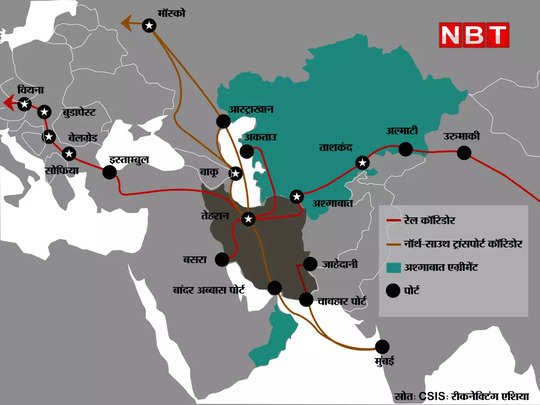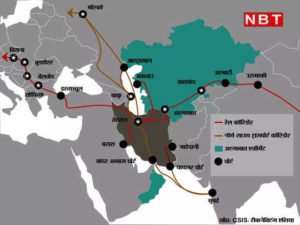Is INSTC, the answer of China’s BRI, which halved the time of India-Russia trade route, despite reservations from US


India Russia Trade INSTC Route: Despite the objections of the US, trade between India and Russia is going to gain momentum. A new short-distance route for trade between the two countries has developed. Russia has also sent the first consignment to India through this corridor named International North-South Transport Corridor (INSTC), which reached Iran.
The International North-South Transport Corridor (INSTC), seen as a response to China’s Belt and Road Initiative (BRI), has become functional. The first consignment of goods to India by Russian train has reached Iran on Tuesday. Now from there it will come to India via sea. The consignment of goods by Russia to India from St Petersburg on Saturday reached the port of Anjali in Iran via the port of Atarkhan in the Caspian Sea. From there it will reach the port of western end of India through Bandar Abbas Port. If we look at the Western sanctions imposed on trade with Russia due to the war with Ukraine, INSTC can also be seen as a major success for India, Russia and Iran in defying these sanctions and continuing mutual trade.
The freight time will be reduced by about half,
this goods sent from Russia will take less than 25 days to reach India. Earlier it used to take 40 days for the arrival of goods between India and Russia. The specialty of the International North-South Transport Corridor (INSTC) is not only that it saves time in trade between Russia and India, but also it is the easiest option among the current geo-political challenges. Also, this route will reduce the cost of trade between India and Russia by about 30%.

Understand the route of INSTC
The North-South Transport Corridor (North-South Transport Corridor) was founded on 12 September 2000 when India, Russia and Iran signed an agreement in Saint Petersburg. Its purpose is to facilitate transportation between member countries. This corridor connects the Indian Ocean and the Persian Gulf to the Caspian Sea via Iran. From there the corridor proceeds to the northern part of Europe, passing through Saint Petersburg and the Russian Federation.
13 countries involved in INSTC project
Five years later, in 2005, Azerbaijan also joined the agreement. It now includes 13 countries – Azerbaijan, Belarus, Bulgaria, Armenia, India, Iran, Kazakhstan, Kyrgyzstan, Oman, Russia, Tajikistan, Turkey and Ukraine. The Russian Federation for North-Western Europe, the Persian Gulf (Western Route) for the Caucasus, the Persian Gulf (Eastern Route) for Central Asia, Iran the Persian Gulf (Central Route) for the Caspian Sea together complete this project.
Rail, road, port – trade will be done through all three routes,
sea, road and rail route is being constructed in this 7,200 km long transport network. It is the shortest distance route between India and Russia. Now India and Iran want to connect INSTC with Chabahar Port of Iran which is the route for India to reach Afghanistan and from there to Central Asia. Between India and Russia, 20 to 30 million tonnes of cargo can be transported every year through this route. At present, on this route, India will trade with Russia via Iran and Azerbaijan. This route is to connect big cities like Mumbai, Moscow, Tehran, Baku, Bandar Abbas, Astrakhan, Anjali etc.
Ashgabat Agreement will also get help
INSTC will also prove to be helpful for the development of the transport system under the Ashgabat Agreement. India, Oman, Iran, Turkmenistan, Uzbekistan and Kazakhstan have signed the Asgabat Agreement for the preparation of the International Transport and Transit Corridor. Its purpose is to ease freight movement between Central Asia and the Persian Gulf.
DISCLAIMER: The author is solely responsible for the views expressed in this article. The author carries the responsibility for citing and/or licensing of images utilized within the text.
